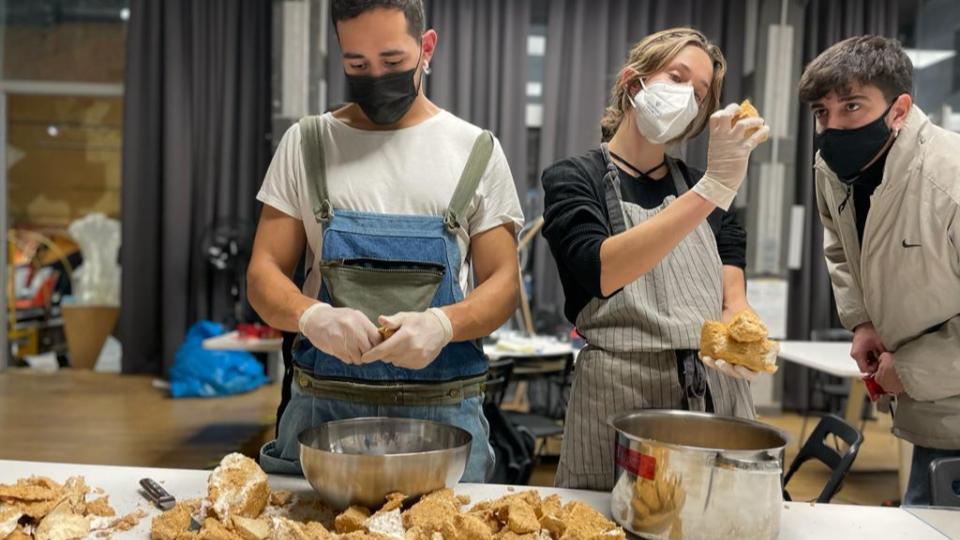
Preparation
For the final Design Dialogues project of the 1st term, we were instructed to carry out a design intervention with the local community that would be an opportunity to co-create and iterate prototypes with others. Our intervention had the objective of creating an experience that would transform ourselves and others, bring difficult topics to the table, learn with and from others, learn through situated action, and understand our direciton through embodied action.
Julia and I have come together in the past through our shared and complementary interest in Mycelium and its properties. I lean more towards the bioremediation aspects of mycelium, while Julia is more interested in the fabrication properties. Together, we cover a wide range of features that can demonstrate the incredible benefits that fungi could bring to our modern society.
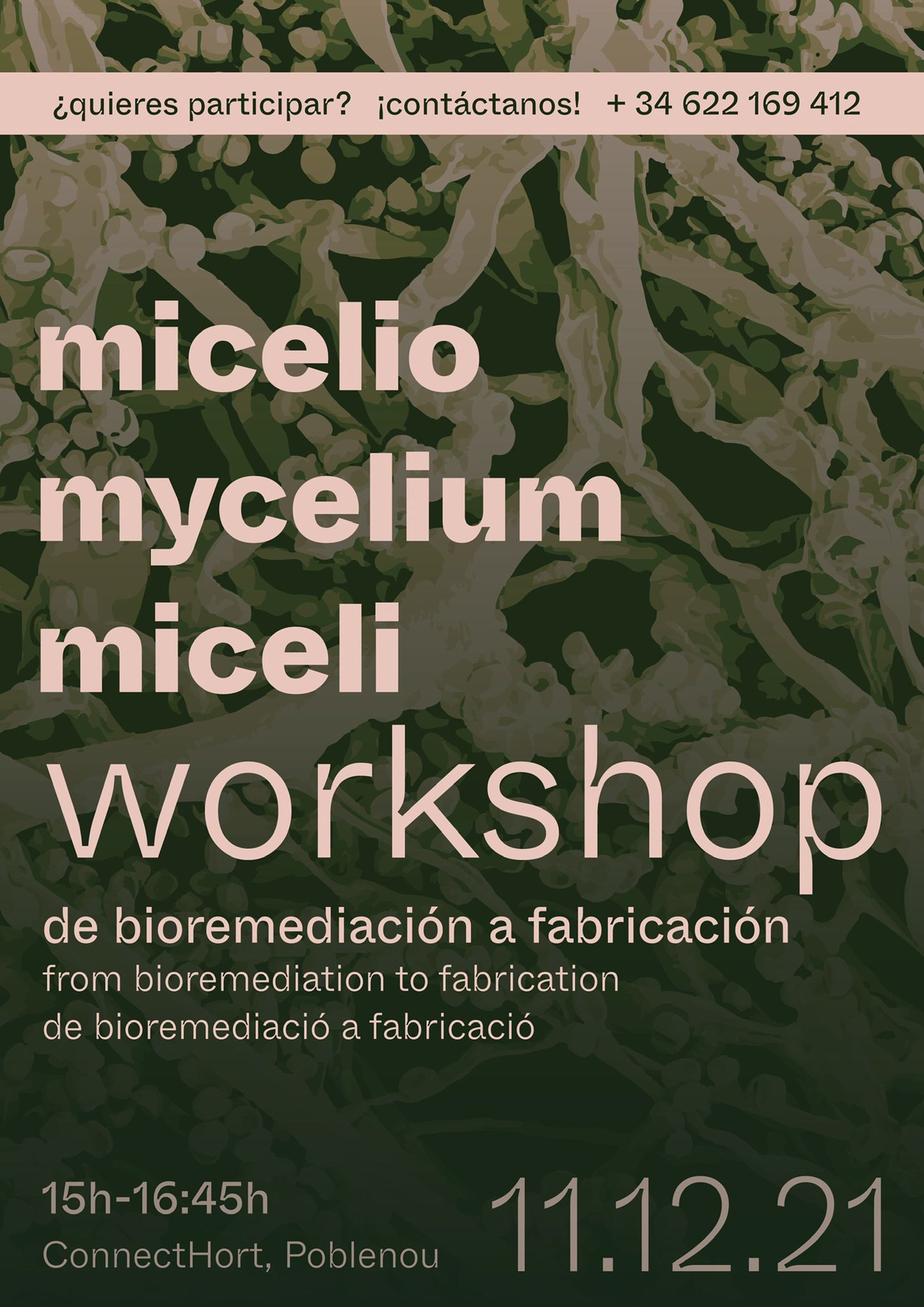
Organising
We have the objective of creating a network of people interested in the field of mycology and switch the conversation from sustainable design to regenerative design. We decided that our workshop was to be a storyline of how fungi could bioremediate various contaminants such as plastics or crude oil, which could then grow into something that could be used for fabrication (molding mycelium into various shapes with a myriad of uses). The message that we're trying to communicate is how mycelium has the power to de-fabricate and then fabricate again, returning waste that was interrupting the life cycle of the planet back into organic materials that are then benefiting the earth.
We want the workshop to be theoretical and practical. We want to know how much people currently know about mycelium, and expand through storytelling their knowledge of the topic. The participants would then involve themselves and their hands into matching fungi strains with the waste thay they could degrade. Afterwards, they would carry out the procedure of making a mycelium brick, from the substrate inoculation to the filling of the mold.
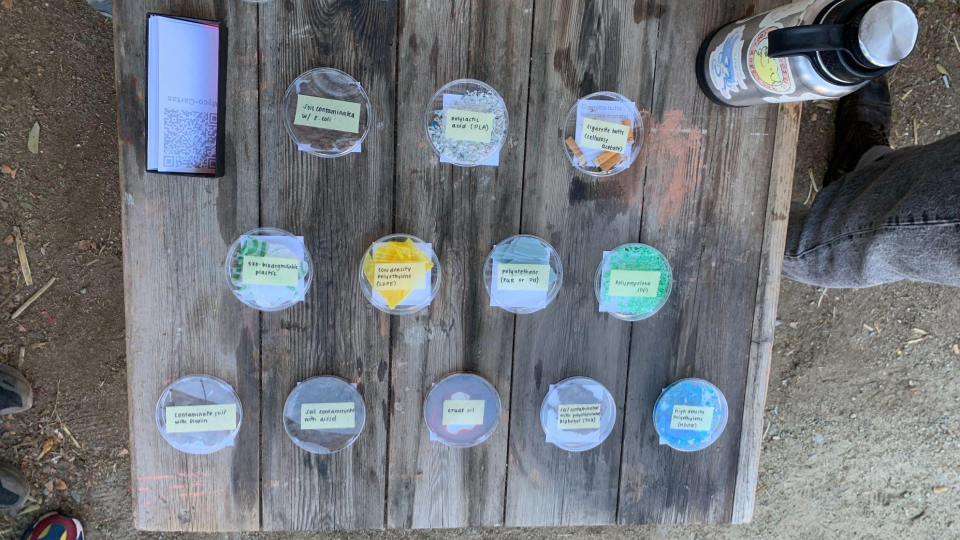
The workshop
Bioremediation
The first part of our workshop consisted of a general overview of the fungi kingdom: on what constituted a fungi, its legacy and its impact on planetary history, how it connects the forest, how it is the digestive system of the natural world, how it is edible and highly nutritious, can be used as biofuel, and its bioremediation & fabrication properties. We briefly went through a vocabulary of mycological terms such as spores, fruiting bodies, substrates, and inoculation.
Afterwards we dove into Bioremediation, or in this case Mycoremediation. The participants learned how bioremediation works and the current knowledge of its extent. Some of the toxic materials that we touched that could be degraded and turned into organic matter by mycelium include:
- Contaminated soil
- Oil spills
- Cigarette buts
- Wastewater
- Polyurethane
- Polyethylene
- Oxo-biodegradable plastic
- Polypropylene
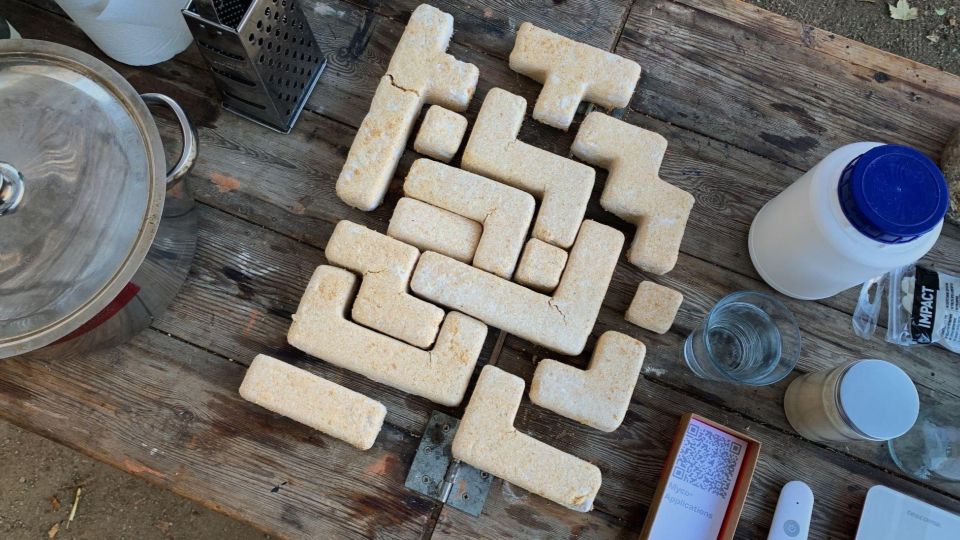
The workshop
Fabrication
The second part of our workshop featured the fabrication aspects of mycelium. We talked about the incredible way in which mycelium acts as a glue for agricultural waste, and this then creates a solid structure with several propertier such as
- Hydrophobic
- Non-flammable
- Grows into any desired form
- Strong and thus safe for earthquake zones
- Insulative
- Absorbs sounds
- Structural
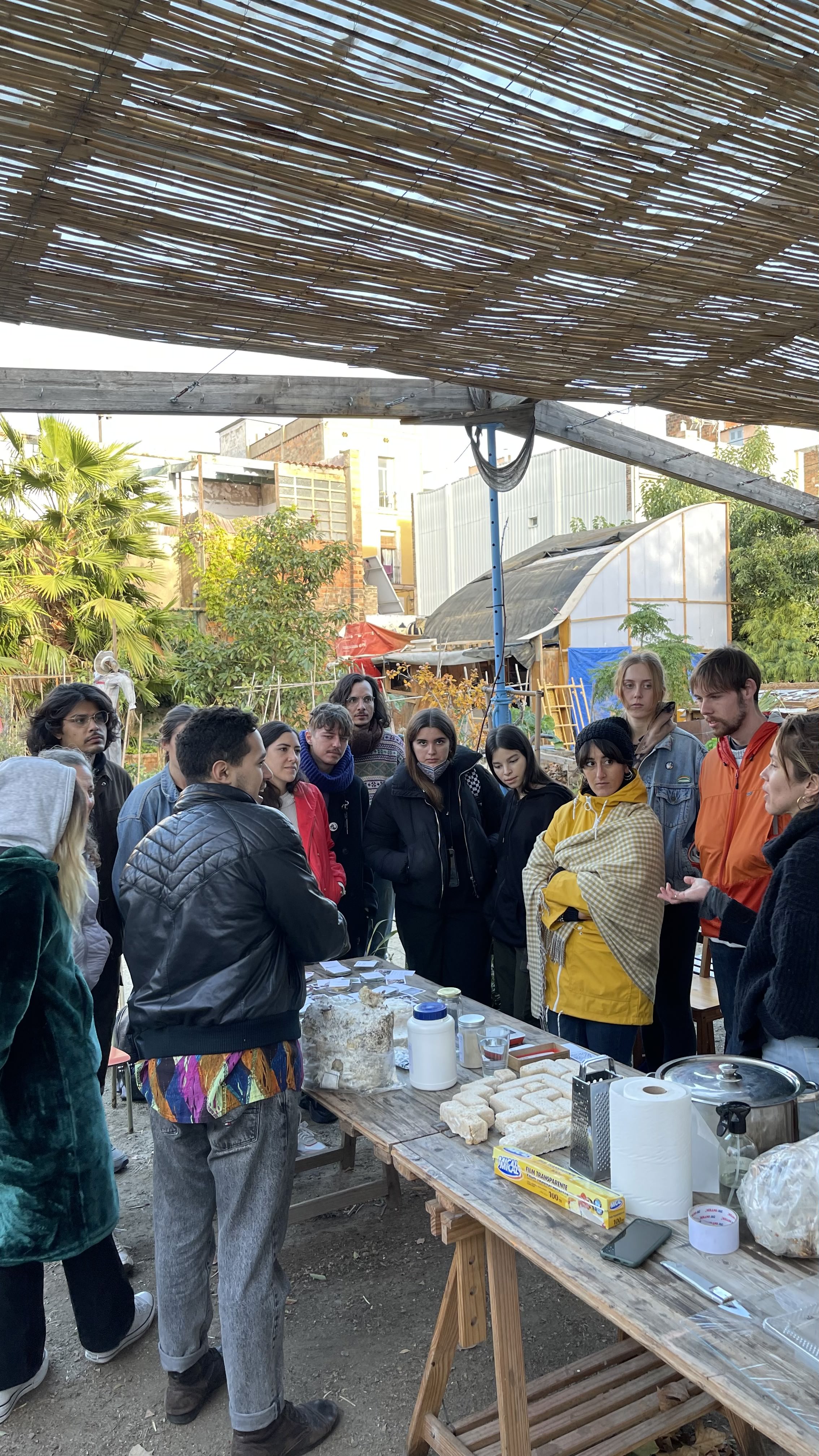
Outcomes
Organising and carrying out this workshop alongside my partner Julia was a great experience. From beginning to end, we organised ourselves based on our skills, strengths and interests in order to seamlessly build up an intervention that taught both of us a great deal about good teamwork. While carrying out the research for this project, I could clean up many of the facts and processes that I was working with. When having to explain a complicated topic to other people (such as the bioremediation process of polymer degradation by fungal organisms) one is forced to simplify the terms and explanations, making it then more clear to the person giving the explanation.
We encountered a group of people with varying levels of interest in the fungal kingdom, and it helped us explore the general impressions that people had of fungi and mycelium. The workshop had tremendous success and we were left with several requests for a second part of the workshop where we would dive even deeper into a specific part of the workshop. This experiment served as a rapid prototyping exercise towards constructing and showcasing an area of deep interest. We were able to see what's important and what isn't, what works and what doesn't, and what is of interest to someone that is just getting started with mycelium vs someone who is already quite experienced.